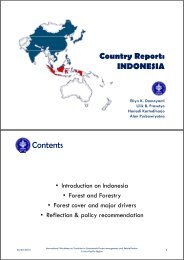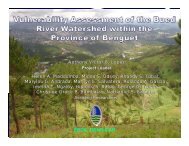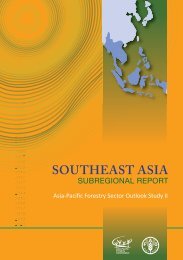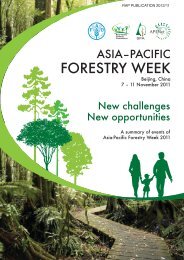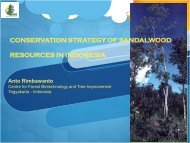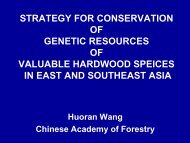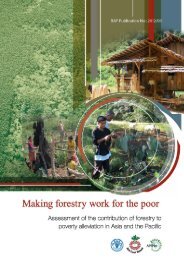Community guidelines for accessing forestry voluntary carbon ... - FAO
Community guidelines for accessing forestry voluntary carbon ... - FAO
Community guidelines for accessing forestry voluntary carbon ... - FAO
You also want an ePaper? Increase the reach of your titles
YUMPU automatically turns print PDFs into web optimized ePapers that Google loves.
Chapter 2: VCM project types and standards<br />
The recent trend of steep growth in credits traded may continue, but<br />
some stakeholders are concerned that the VCM in <strong>for</strong>estry credits might<br />
collapse or stall because the deal <strong>for</strong> a future inter-governmental climate<br />
agreement is not expected until about 2020. 12 So it is important to ask<br />
why private sector investors are still engaged in this market and what<br />
makes <strong>for</strong>estry projects so interesting (see Box 3).<br />
Box 3: Why would anyone invest in the <strong>for</strong>estry VCM?<br />
Investors choose <strong>for</strong>estry VCM projects <strong>for</strong> many reasons. A 2009<br />
survey of 141 corporate buyers of <strong>for</strong>estry offsets found that the top<br />
reasons <strong>for</strong> choosing <strong>for</strong>estry credits were:<br />
• They address two major global problems – de<strong>for</strong>estation and<br />
climate change – at the same time.<br />
• Forestry projects can help to enhance a company’s public<br />
image, because <strong>for</strong>ested ecosystems provide visually appealing<br />
images.<br />
• They result in tangible land-use changes, and have a more<br />
visible impact than other kinds of <strong>carbon</strong> offset projects.<br />
• They appeal to a wide variety of audiences, because they also<br />
offer co-benefits, such as biodiversity, conservation, poverty<br />
alleviation and human rights advancement.<br />
Individual empowerment: The biggest reason to go <strong>for</strong> <strong>for</strong>estry VCM<br />
projects?<br />
“The <strong>voluntary</strong> <strong>carbon</strong> markets provide individuals — not just<br />
corporations and large organizations — with a means of participating<br />
in the fight against climate change in a way that the compliance<br />
markets do not. In particular, some environmentalists view the<br />
<strong>voluntary</strong> <strong>carbon</strong> markets as an important tool <strong>for</strong> educating the<br />
12 See “Forests and Climate Change after Durban: An Asia-Pacific Perspective’ (<strong>FAO</strong>/<br />
RECOFTC, 2012)<br />
45




